Anyone who owns a PC, has certainly wished that it would work faster. Even if it was still racing fast shortly after the purchase – at some point it will run slower. Then a new PC is needed, many think. Perhaps a new processor, a new graphics card or more RAM will do the trick, users with experience believe. But many people still underestimate a very special update: the solid-state drive (SSD).
The fact that a new hard drive increases the speed doesn’t sound intuitive. But that’s exactly what it is. SSDs will sooner or later replace the previous hard disk drives (HDDs). There are enough reasons for this. Above all, however, SSDs are much faster in the writing and reading process, which represents an enormous speed boost for desktop computers and notebooks. In the meantime, the compact storage devices are becoming increasingly cheaper and more numerous on the market.
1. Good Reasons to Buy an SSD
Revolutionary leaps in performance are already promised to customers with every new CPU cooler. Experienced customers remain skeptical. And so you can underestimate the fact that an SSD really does bring revolutionary leaps in speed. The reason is that it uses a completely different technology to store and read files, related to traditional RAM or USB sticks.
This has one important advantage: all data is practically immediately available. With old hard drives, a movable read head floats over magnetic discs that rotate quickly – a bit like a turntable. Once the read head has reached its destination, it can read data quickly. But the SSD has already reached its destination and nothing is moving on its board. Especially when many small files have to be read, it is many times faster than HDDs. This is the case when the computer is booted, but also at every program start.
The advantages: Thanks to their design, SSDs are much faster, quieter, cooler, insensitive to shocks, and consume less power.
2. Prejudices and Reasons Against Buying a SSD
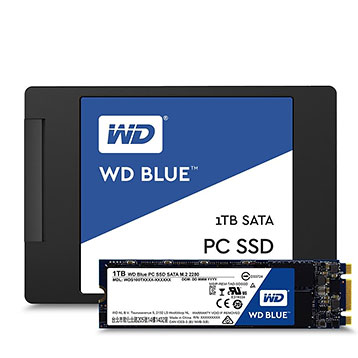
So why don’t all PCs just have SSDs on board? The most important answer can be found in every price comparison: SSDs are more expensive than normal hard drives – much more expensive. The prices have dropped considerably in the meantime, but as long as conventional HDDs are developed, there will always be a clear difference. Especially in large sizes of one terabyte and more, SSDs are almost prohibitively expensive.
Other reasons only hold themselves in rumors: Early SSD models weren’t so technically mature, gave up quite quickly or became much slower. That’s changed: Newer series last many years in normal use.
3. Important Equipment Features
If you now want to buy an SSD, there are many technical data to consider. Some of them sound familiar, others cryptic. A short overview:
3.1 Storage Capacity
The storage capacity should be known to everyone and is given in GB. As with conventional HDDs, there is always a little less memory actually usable than indicated on the package.
3.2 Series / Year of Construction
SSDs are still being further developed, coming again and again in new model series, with new controllers and modified memory types. Comparisons between different manufacturers can only be made with concrete tests. But as a rule of thumb: New is better. If in doubt, a look at the year of manufacture will help. Newer series are almost always worth a small surcharge.
3.3 Read and Write Speeds
Higher transfer rates are of course better. In most application scenarios the read speed is more important than the write speed. But even more important is the following value.
3.4 IOPS
The “Input/Output Operations” are also an indicator for the speed of a disk. As with transfer rates, these numbers can be measured using various methods. Manufacturer’s specifications are therefore only suitable for comparing different model series. Only independent technical tests between competing companies provide meaningful comparisons.
3.5 Connection
Does the SSD find a connection in the computer? With halfway current PCs this is actually always to be affirmed. For older models, you should check that the corresponding SATA standard is also supported by the motherboard. In addition, SSDs almost always come in small notebook sizes. Notebook owners only have to make sure that their hard drive is replaceable at all.
3.6 MTBF
Anyone who works a lot with the PC and cares about the service life of the SSD pays attention to the “Mean Time Before Failure”. The value in hours does not reliably indicate the exact lifetime of an SSD, but can be compared: More is better.
3.7 Warranty
If you are looking for a really durable model, you will find many SSDs with impressively long warranty periods on the market. For example, Samsung offers up to 5 years warranty on its EVO series.
3.8 Power Consumption
All SSDs save power. But the power consumption is very different. Notebook users in particular save battery power with economical models.
4. Useful Shopping Tips
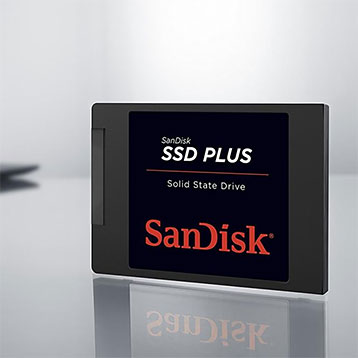
Now you may see which SSDs are better and which are worse. But which ones to buy now? We would have a few basic tips:
- The System Is Sufficient
Large SSDs are expensive. But most of the time you don’t need them. All desktop PCs, but also some notebooks, can be equipped with two hard drives. An SSD with 120 to 250GB memory is recommended for the operating system and programs – depending on how many programs are used. All the multimedia data, photos, films and videos that really take up space are then stored on a cheap, spacious hard drive. - Ancient Is Too Old
Does the computer not have a SATA interface? Then you cannot install the SSD. It should be SATA III, otherwise the speed of the SSD will be throttled. If the PC does not have at least Windows 7, then expert settings are necessary so that the SSD is also used effectively and gently. - Form Factor
Client SSDs are almost only available in 2.5 inches and M.2 form factor – in classic notebook sizes. So notebook owners simply pay attention to the right size. Desktop users don’t despair. Even if the desired SSD isn’t already supplied with a “mounting frame”, you can order it from your PC dealer for just a few pounds. - Regulate Migration
How do I get the data from the old hard drive to the fresh SSD? With a new installation of the operating system, the advantages of the SSD can be fully exploited. If you are afraid of this, you will find many SSDs with “migration sets”, often a package of software and cable, with which the data can be copied one to one. You can also find instructions on how to switch from HDD to SSD later in this guide. No matter how you approach it, it’s important to make a backup before such a big step. Data loss is a risk with every drive change!
How that purrs! If the new SSD is ready to go, then the first system start is the greatest possible aha experience. Suddenly the computer boots up in a few seconds: Once you experience this, you are already converted. But the manageable investment in an SSD is worth it.
5. Major Manufacturers of SSDs
5.1 Samsung
Samsung is by far the largest conglomerate based in South Korea. The company employs almost 500,000 people and is the market leader in many areas. The flagship of the group is the Samsung Electronics division, which is primarily represented in the memory, television and smartphone sectors. In Europe, Samsung is also the market leader for SSDs.
5.2 SanDisk
SanDisk Corporation, founded in 1988 and headquartered in the USA, is the world’s largest provider of flash memory. The company owns more than 1000 patents and is also represented in the field of SSD memories with a variety of products. Especially the inexpensive models are very popular from SanDisk.
5.3 Crucial
Micron Technology Inc. is a company in the USA that is one of the five largest semiconductor companies in the world and employs around 26,000 people. Under the name Crucial, the company has been selling to end customers all over the world since 1996.
5.4 OCZ
The company OCZ Technology is also based in the USA and has only been active in the storage sector since 2002. The company’s products were primarily aimed at computer hardware enthusiasts. In January 2014, OCZ Technology was acquired by the Japanese company Toshiba.
6. SSD vs HDD – Which Is Better?

When you buy a new computer, the data memory will also be available at some point. And an important question is often overlooked: SSD or HDD? Many customers look at the price tag and see that conventional hard disk drives (HDDs) are much cheaper than the new-fangled solid-state drives (SSDs) – so they take the safe, old-fashioned option. For the ideal price-performance ratio, this tactic is almost always wrong. We explain why.
6.1 What Can the Hard Drive Do?
Hard drives are a combination of thin, fast-moving disks on which information is magnetically stored. A mobile data arm reads and writes on it, a bit like a turntable. Today they are much faster, more compact and hold more data than before. But some basic shortcomings remain: For every read access, the data arm must first move to the right place. The moving parts also mean wear, susceptibility to strong vibrations, audible noise and a certain amount of heat.
Above all, hard drives are cheap. Eight terabytes and more are also possible per drive. The access speeds do not make any quantum leaps, but have increased significantly. Even in the smaller 2.5 inch laptop format, spacious hard drives have become really cheap in the meantime. If you need to store a lot of data, whether pictures, videos, music or computer games, you need a hard drive in your computer.
6.2 What Can the SSD Do?
SSDs are so-called non-volatile memories: boards on which data chips are located. Nothing moves. Basically, the same technology is used in USB sticks and memory cards. The advantages of this technology are obvious. SSDs can be produced much smaller. Nothing moves. This makes them quieter, cooler and insensitive to interference. But flash memory also has a clear problem: the technology is comparatively new. A few years ago, SSDs were almost completely unaffordable. Now they have become significantly cheaper – but compared to hard drives, the gigabyte of memory still costs a lot more.
Above all, SSDs are fast. The speed boost can hardly be captured on data sheets. Because fast reading falls apart into many possible tasks. A large, coherent file (such as a video) can also be read by a hard drive at high speed. But with many small files the hard drive must bring each time the arm into position. The SSD, on the other hand, has immediate access and sends the data over several channels simultaneously. The result is a difference like day and night: When reading many small files, SSDs can easily reach 50 times the speed of a hard disk. So anyone who appreciates speed in everyday work needs an SSD.
6.3 How to Decide?
Either or there can hardly be one with both technologies. A modern PC with traditional storage needs is simply too big for affordable SSDs. Large non-volatile memory is available, but still quite expensive. Hard drives, on the other hand, are cheap and work. But no matter how well you equip your PC – in many areas it will be outstripped by any cheap model that has an SSD on board.
It’s smarter to use the respective strengths of both: A good PC nowadays has an SSD and a hard drive. The HDD does not have to belong to the newest one at all, here above all the capacity is important. The SSD, on the other hand, doesn’t have to be the largest – the space only has to be sufficient for the operating system and important applications. Often 128 gigabytes or 250GB are enough.
This combination solution has great advantages. Because many small files have to be called up especially when the operating system is started and when small applications and services are started. If Windows, Browser, Word and Co are on the SSD, the computer often starts twice as fast, even large programs are available after a few seconds. The fact that, on the other hand, a video takes two seconds to start is of little importance.
6.4 How to Buy Both?
Those who still have an old-fashioned PC in a case with an external monitor can save the most. Because then the acquisition and installation of SSD and HDD is completely simple, works exactly like with old drives. The purchase of a small SSD is also a smart, cheap upgrade for old PCs. However, an operating system from Windows 7 should be available, otherwise the upgrade will be tricky.
It gets more complicated for notebook owners. If there is really only room for one drive, then sometimes it has to be the old-fashioned, slow hard drive – if a lot of data has to be stored on the device. If you’re always online anyway, you might be able to outsource a lot of the data to a cloud service and keep it stored online. However, many laptops today also have room for two drives – or a smaller slot for SSDs according to the mSATA standard. A good compromise for laptops with little space is so-called hybrid hard drives: In these somewhat more expensive hard drives, a small flash memory provides at least a little more speed.
7. From HDD to SSD: How to Make the Switch

Almost everyone thinks about it these days: Get your old PC back on track by buying an SSD. Flash memory has long since become affordable. More and more conventional users want to switch. But in practice it’s not that easy: How do you get the data from the old drive to the new one? Here are the most important steps:
7.1 Solution in a Package?
Some SSDs come with a data transfer kit. This is an ideal way, especially for amateurs, and quite a few pounds more value. So you can simply connect the SSD to the old PC via USB, run the included software on the old computer, and watch the largely automatic migration of the data. Then simply jump to the step “Installation” and you’re done!
7.2 Backup: Image or Important Files Only?
Whenever you move data on a large scale, you should make a backup first. This is essential, especially if you don’t know exactly what you are doing. If you don’t have to back up the entire system, but rather personal photos and documents, then online backup is often the simplest and cheapest option for cloud services. But you need a fast Internet connection. Either way, if only certain documents are to be backed up, and all applications, settings, e-mails, etc. are not so important or available online, then only a backup of personal data to an external hard drive or online is important.
If you really want to replace the entire hard drive with an SSD that has at least the same data capacity, you should make an image of the old hard drive and drag it to the new one. For this you usually need an additional external hard drive, which you should consider as a backup solution anyway. Different backup programs are available. Especially simple and in most cases completely sufficient is the pre-installed Windows program “Backup and Restore“. Here you have to make sure that the complete “System Image” is backed up to the backup drive.
7.3 Installation: Like Hard Drive, Only Smaller
Basically, the installation of an SSD works in exactly the same way as that of a conventional HDD. The computer must be shut down completely, the power cable unplugged. Now the case must be opened. With stationary PCs, a panel of the case is unscrewed, the drive is inserted into one of the slots provided, fixed with 4 screws and connected to power and SATA cables. When installing the frequently used SSDs in laptop format 2.5 inches, an inexpensive installation frame must be purchased in addition. Laptops usually have a flap for the installation of new hard drives. Here, too, power and SATA plugs must be connected, but as a rule nothing can be screwed together.
7.4 Migration: Push or Rebuild?
And what happens after switching on? Possibly nothing at all! The operating system has to come from somewhere. Has all the data already been transferred to the SSD via a transfer kit? Then the computer should simply boot up. If this is not the case, then the PC should be booted via a boot medium – usually the Windows or Recovery DVD that was delivered with the computer. If you don’t have a boot medium, you need one. You can also make it yourself, but this is too complex for this article. A boot disk can also be created from the “Backup and Restore” program.
Building the operating system from scratch is a lot of work, but every few years a good idea anyway to increase the performance of the computer. In this case, simply insert the installation disk and the traditional installation begins. If you want to install the data from an image, simply insert a Windows DVD or the disk from the “Backup and Restore” program.
7.5 Possible Problems: Eyes on and Through
Many technical advantages of an SSD can only be used if the PC is still reasonably modern. This means: Windows 7, 8 or 10 as operating system, SATA II or SATA III (3 bit or 6 bit) as connection standard. External hard drives must be connected via USB 3.0 in order to exploit their speed advantage.
If, contrary to expectations, something does not work, it quickly becomes complicated, as is usual with computers. Online forums provide information about whether the controller of the SSD and the motherboard do not fit together. If the speed is significantly slower than expected, you may need to check the alignment of the partition. The free tool AS-SSD detects this problem. Basically, laymen should quickly turn to expert friends and acquaintances, or be patient and go to relevant online forums.
8. Frequently Asked Questions (FAQ)
Can an SSD Also Be Operated Externally?
Yes that works! All you have to do here is buy a suitable case and install the memory in it. Most cases incl. cables are already available from £8. The whole thing is then connected to the computer via a USB port. When buying such a case you should pay attention to a fast USB port.
My SSD Is Not Recognized. What Can I Do?
First of all you should try another SATA port on the mainboard. If this doesn’t help either, a BIOS update is recommended in most cases. Usually, necessary controller driver updates will be provided here. In case of problems it is often helpful to have a look at the homepage of the manufacturer or the manual.
How Often Is an SSD Writable?
SSDs initially suffered from firmware problems and performance degradation. But the times are long gone. In most cases an SSD survives the computer or notebook by far. This can also be seen from the long warranty periods that Samsung and other manufacturers grant their customers. But the exact number of write cycles cannot be predicted. This varies depending on the capacity of the SSD and the amount of data being written.
Should I Defragment the SSD Regularly?
No. Unlike the HDD, an SSD does not have a write and read head. Therefore a defragmentation is completely pointless. Since numerous write and read operations are carried out during the process, it is even rather harmful for the life of the SSD.
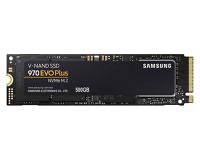

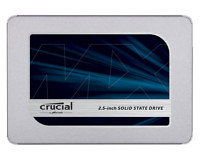
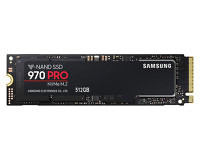

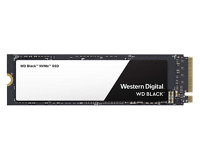

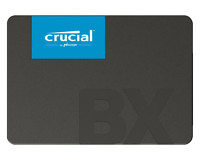

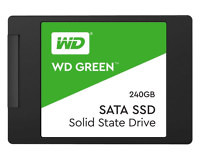
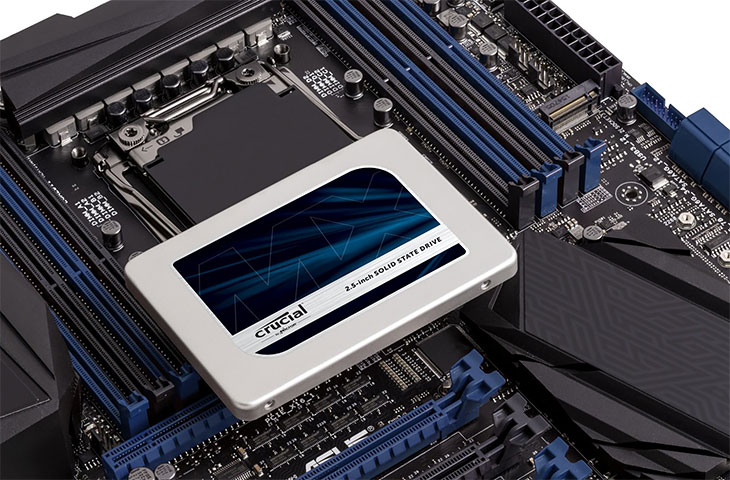

 (6)
(6)
